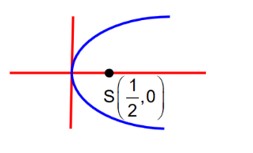Class 11th
Get insights from 8k questions on Class 11th, answered by students, alumni, and experts. You may also ask and answer any question you like about Class 11th
Follow Ask QuestionQuestions
Discussions
Active Users
Followers
New answer posted
3 months agoContributor-Level 10
Elastic deformation leads to the temporary change in a material's shape that is also reversible. It occurs for energy storage in devices, such as springs. It's also essential for understanding the flexibility of structural components like beams in bridges. This principle is used in engineering design. You can think vehicle suspension systems and even the resilience of buildings against wind forces.
New answer posted
3 months agoContributor-Level 10
Time to reach at max height t = of balls thrown in 1 sec = n.
So, time taken by each ball to reach maxm height, =
i.e. So, hmax =
=
New answer posted
3 months agoContributor-Level 10
When we talk about elastic materials, we're referring to those that really show off their elasticity. Think of natural rubber, synthetic polymers, including spandex (also known as Lycra) and nylon, and even metals such as spring steel when they're within their elastic limits. These materials are quite resilient. They can store potential energy and bounce back to their original shape after being stretched or compressed. This behaviour is determined by the Hooke's Law.
New answer posted
3 months agoContributor-Level 10
tangent at (2t2, 4t) is ty = x + 2t2,
It passes through (5, 7)
New answer posted
3 months agoContributor-Level 10
Elastic energy is stored in objects that can deform. They have several applications, including springs in vehicle suspension systems and wind-up clocks. This potential energy, present in items like stretched rubber bands, trampolines, and an archer's bow, is converted to kinetic energy upon release.
New answer posted
3 months agoContributor-Level 10
110 < a15 < 120
110 < a + 14d < 120
110 < 57a < 120
->a = 2, d = 8
New answer posted
3 months agoContributor-Level 10
For R1, take a = 1, b = 0, c = -1
but AC < 0
So R1 is not an equivalence relation.
For R2, it will not be symmetric.
So R2 is also not an equivalence relation.
New answer posted
3 months agoContributor-Level 10
A. Torque (iii) Nm
B. Stress (iv) Nm-2
C. Latent Heat (ii) J kg-1
D. Power (i) Nm S-1
New answer posted
3 months agoContributor-Level 10
Let the equation of circle be

Radius =
This circle and parabola
touch each other, so
Taking an Exam? Selecting a College?
Get authentic answers from experts, students and alumni that you won't find anywhere else
Sign Up on ShikshaOn Shiksha, get access to
- 65k Colleges
- 1.2k Exams
- 679k Reviews
- 1800k Answers
